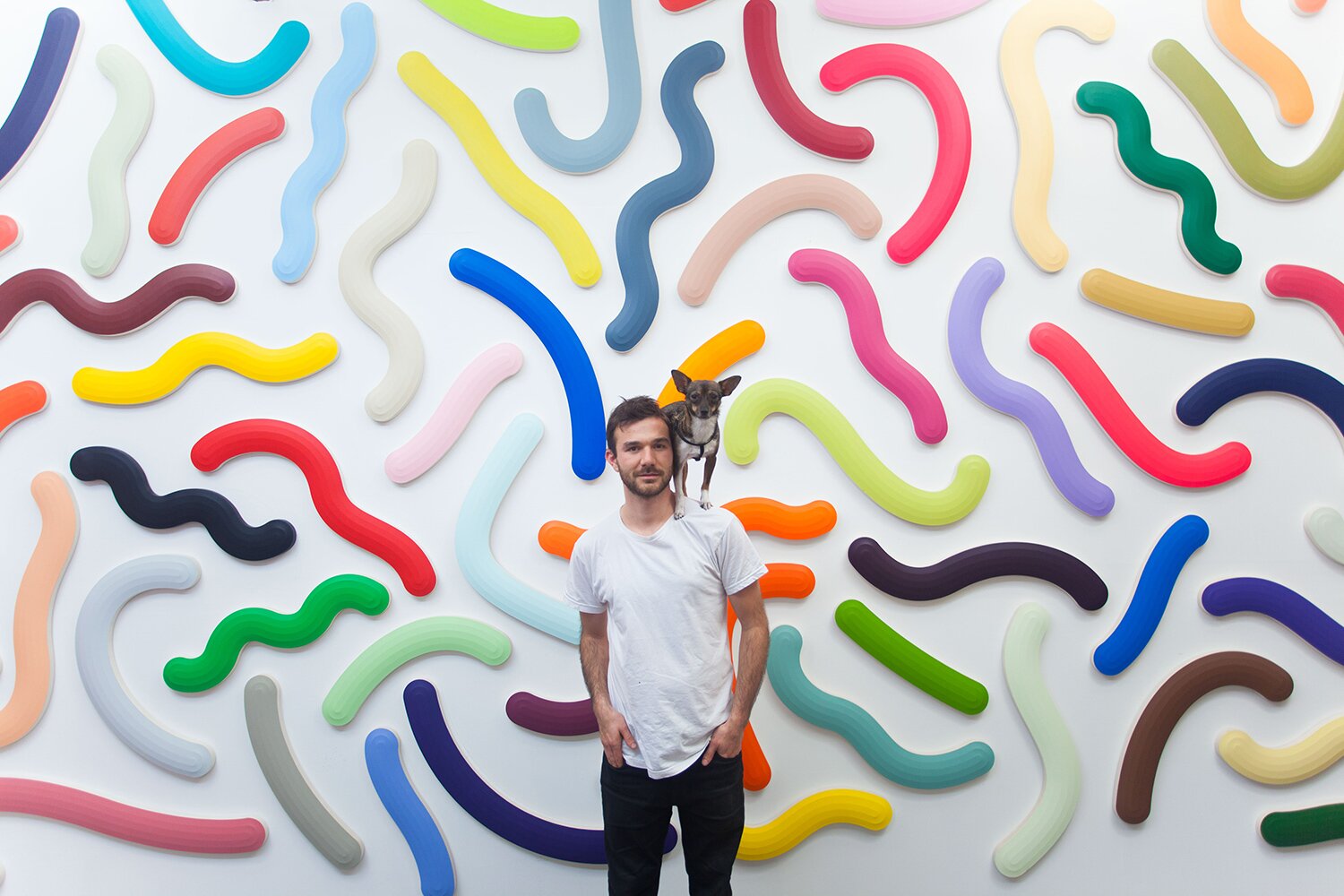
We met with in his Industry City studio in Sunset Park, Brooklyn. To get to his space, we passed through a furniture studio and walked into his meticulously organized studio reflecting the precision in his work. Each piece is carefully planned out to the wooden structures underneath to how he stretches the canvas on top. There were pieces in mid-process laid out on the tables like puzzle pieces as completed interlocking canvas works hung on walls. We talked to Josh as he was getting ready for his two-man show with his childhood friend Sam Friedman at Joshua Liner Gallery.
opened January 7 and runs through February 6, 2016 at Joshua Liner Gallery.
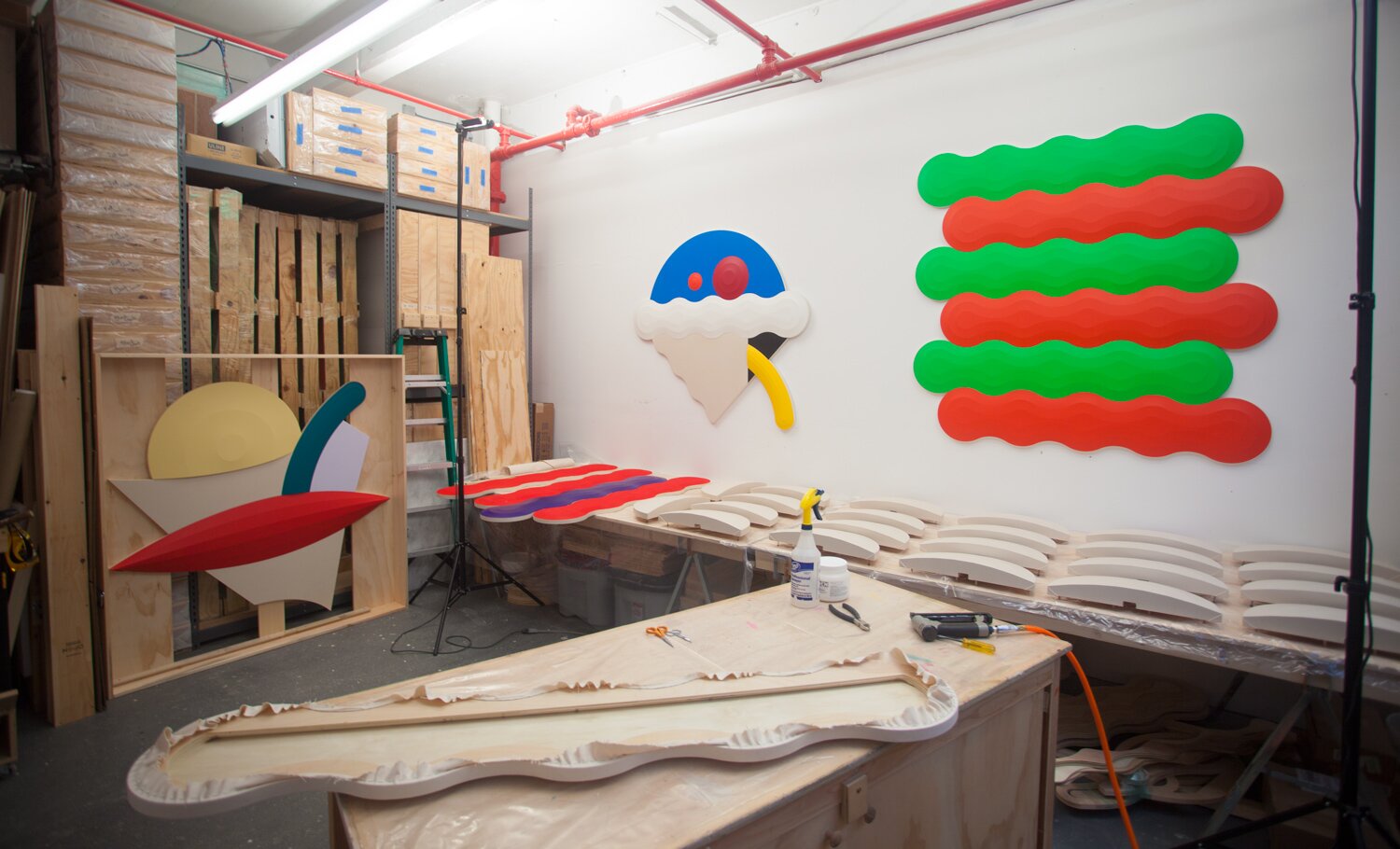
F: What is your process?
J: I start with an idea and then begin drawing it on the computer. I do not hand sketch. Once the overall composition is finished each individual piece is designed to minimize weight while maintaining strength. All the pieces are layed out on a 4’ x 8’ file and sent to a cnc machine to be cut out of plywood. I receive the shapes, assemble the parts, and then stretch the canvas by hand. This is the most challenging part of the process. After the canvas is stretched it is painted and varnished with acrylics. Finally each part is attached to others to assemble a whole painting.
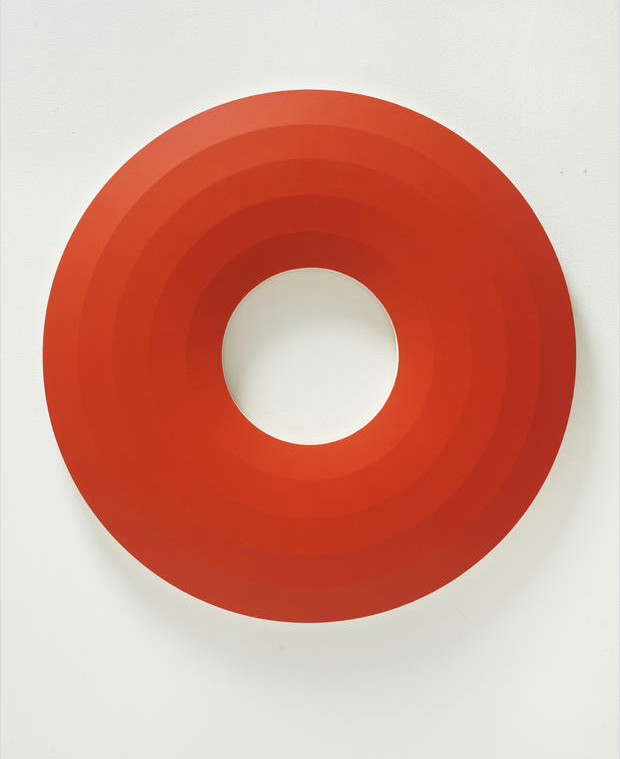
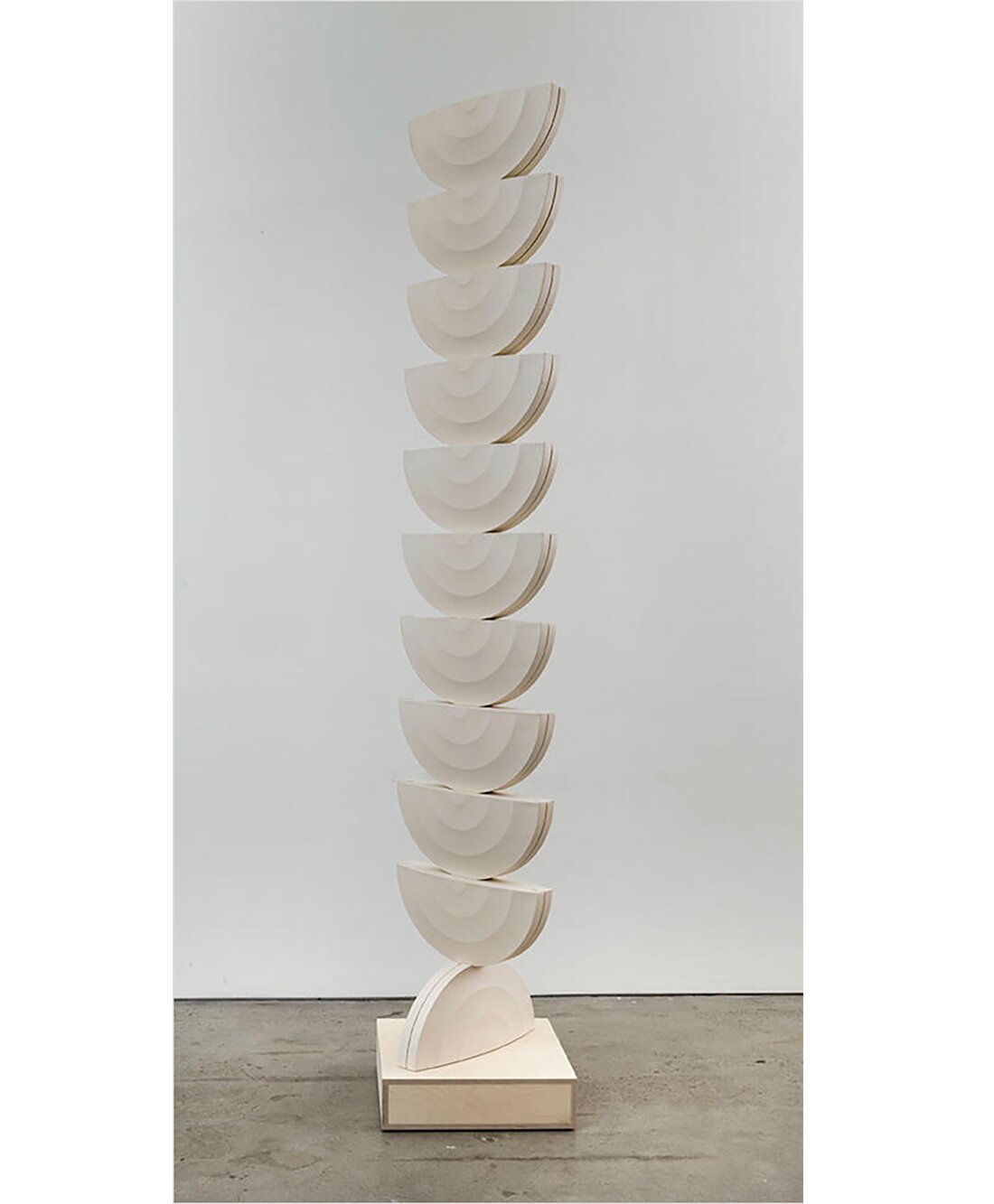
F: Do you see your work as more sculptural or painting?
J: If they live on a wall and are viewed head on they are paintings. If they live in the middle of a room and are viewed from multiple angles they are sculptures. Up until this point I have concentrated mostly on wall pieces made of acrylic on canvas over wood. I consider these paintings.
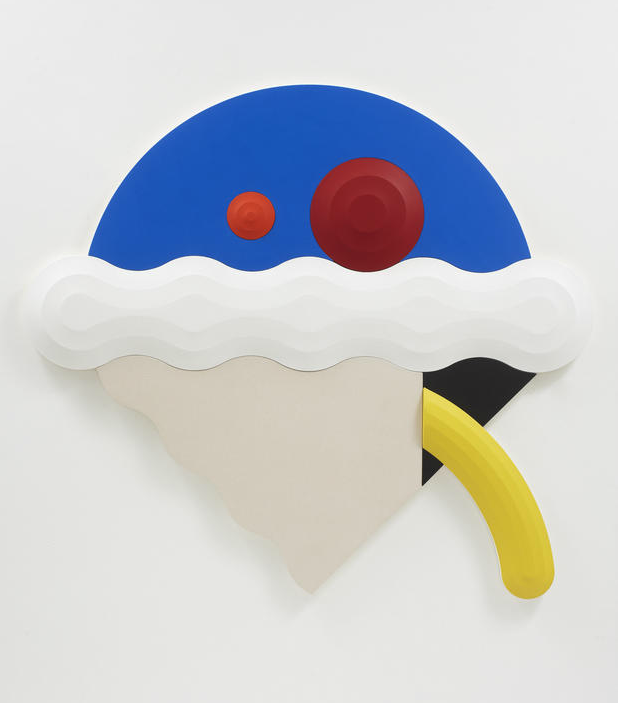
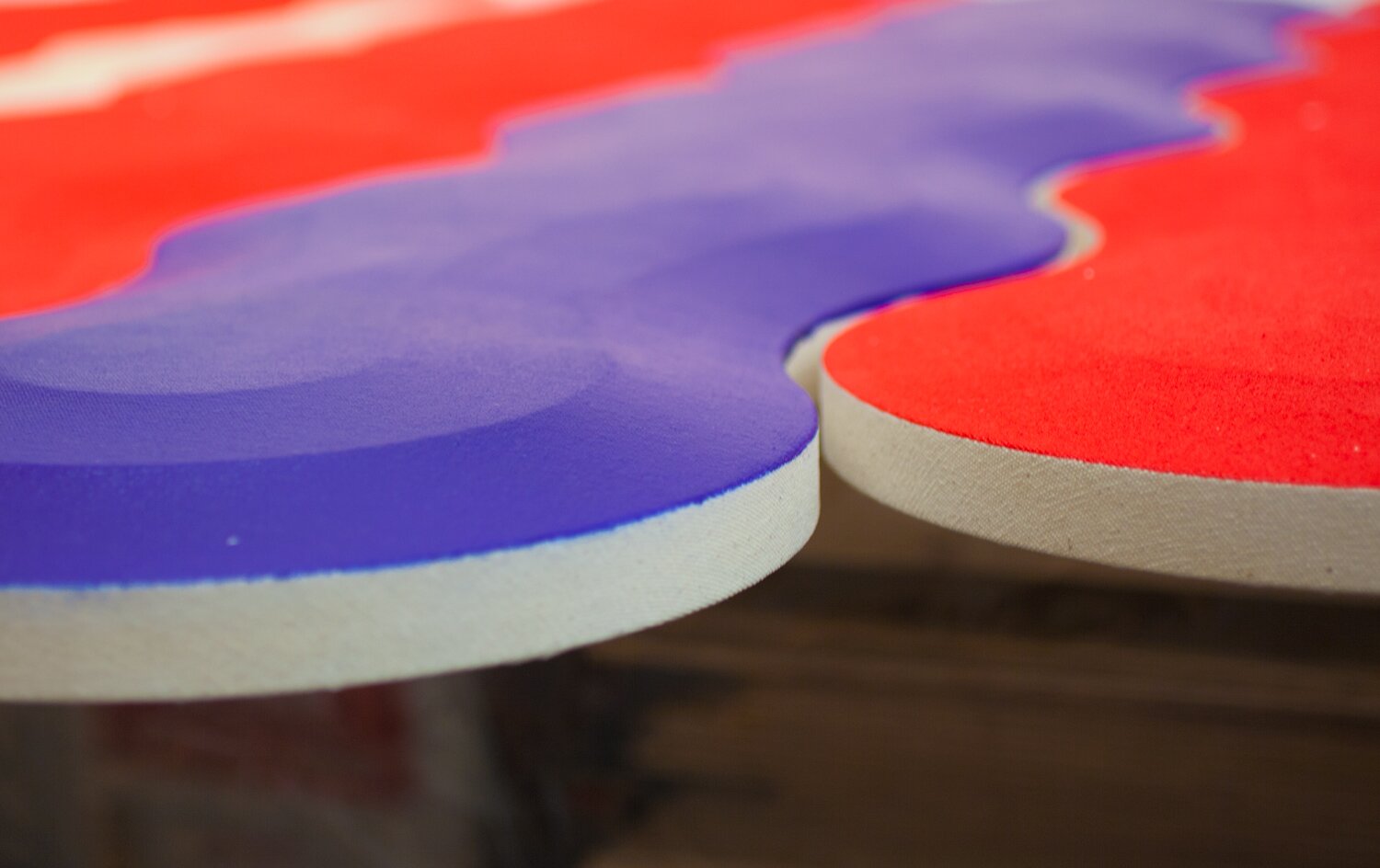
F: Does the wrapping of the canvas dictate what the shapes will be or the scale at which they can exist?
J: Yes. Any shape is possible to stretch with canvas if you cut the sidewalls. I have been opposed to this because it has helped me better understand the stretching process and it is cleaner. I design my shapes to be able to stretch without cutting the sidewalls. This in general means larger, curving shapes.
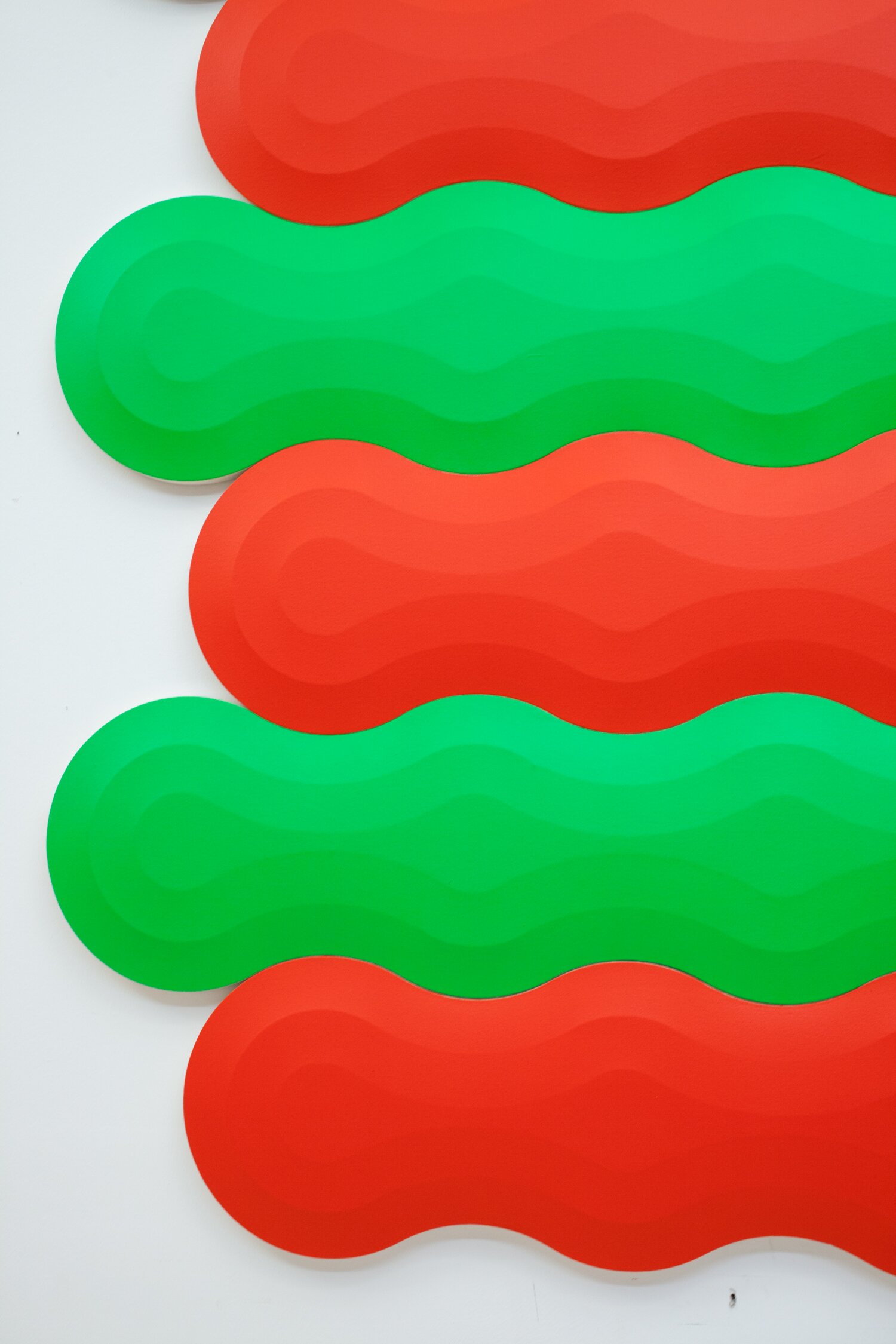
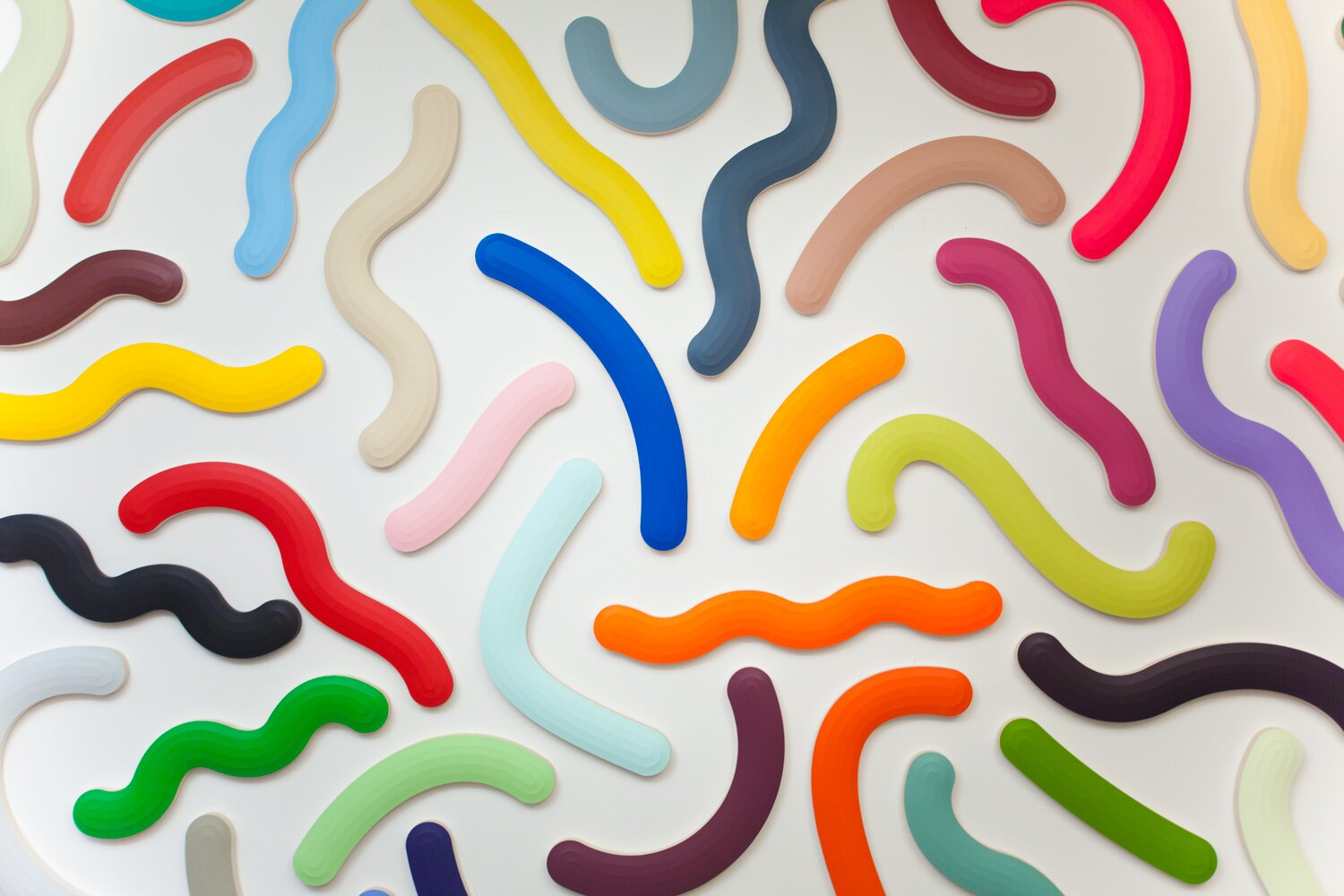
F: I notice that you do not paint the sides of your objects, keeping the the unprimed canvas exposed. Why is that?
J: I do not paint the sides because I want my work to be considered paintings. This is an older tradition in painting. It also shows off the craftsmanship of the stretching.
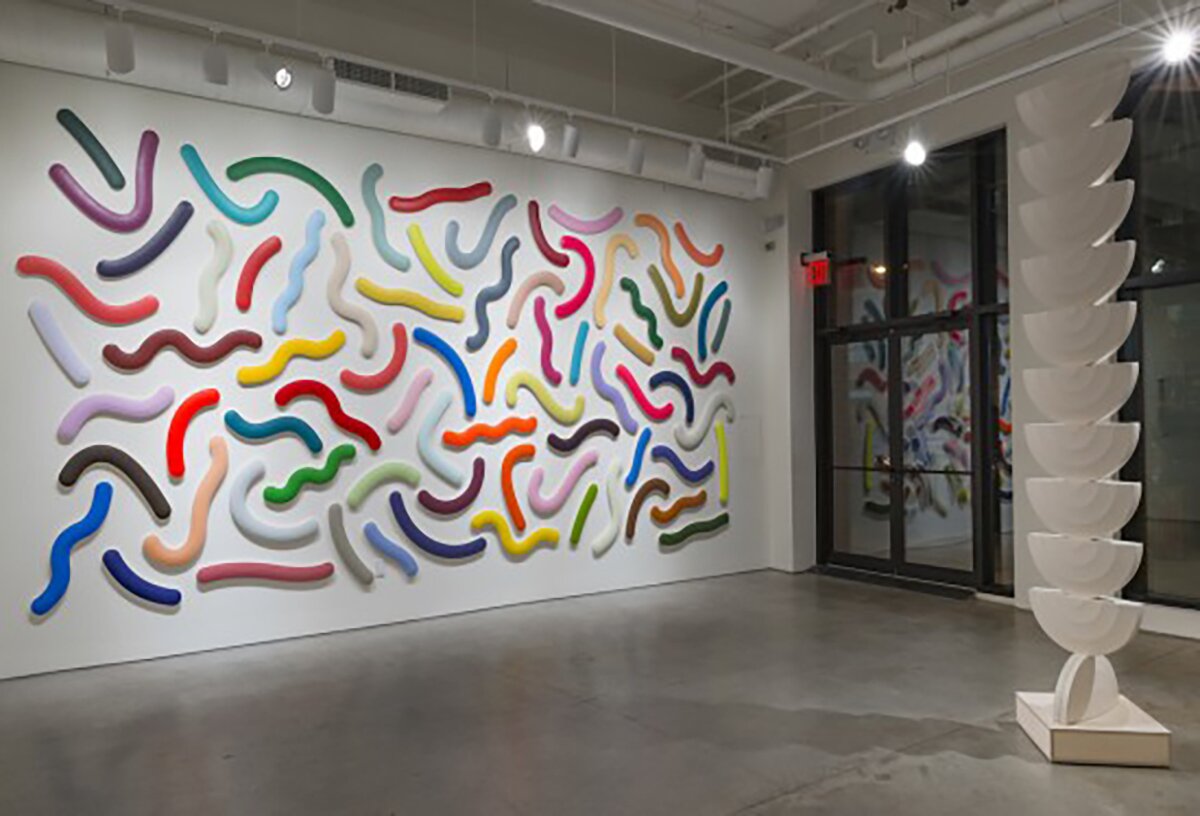
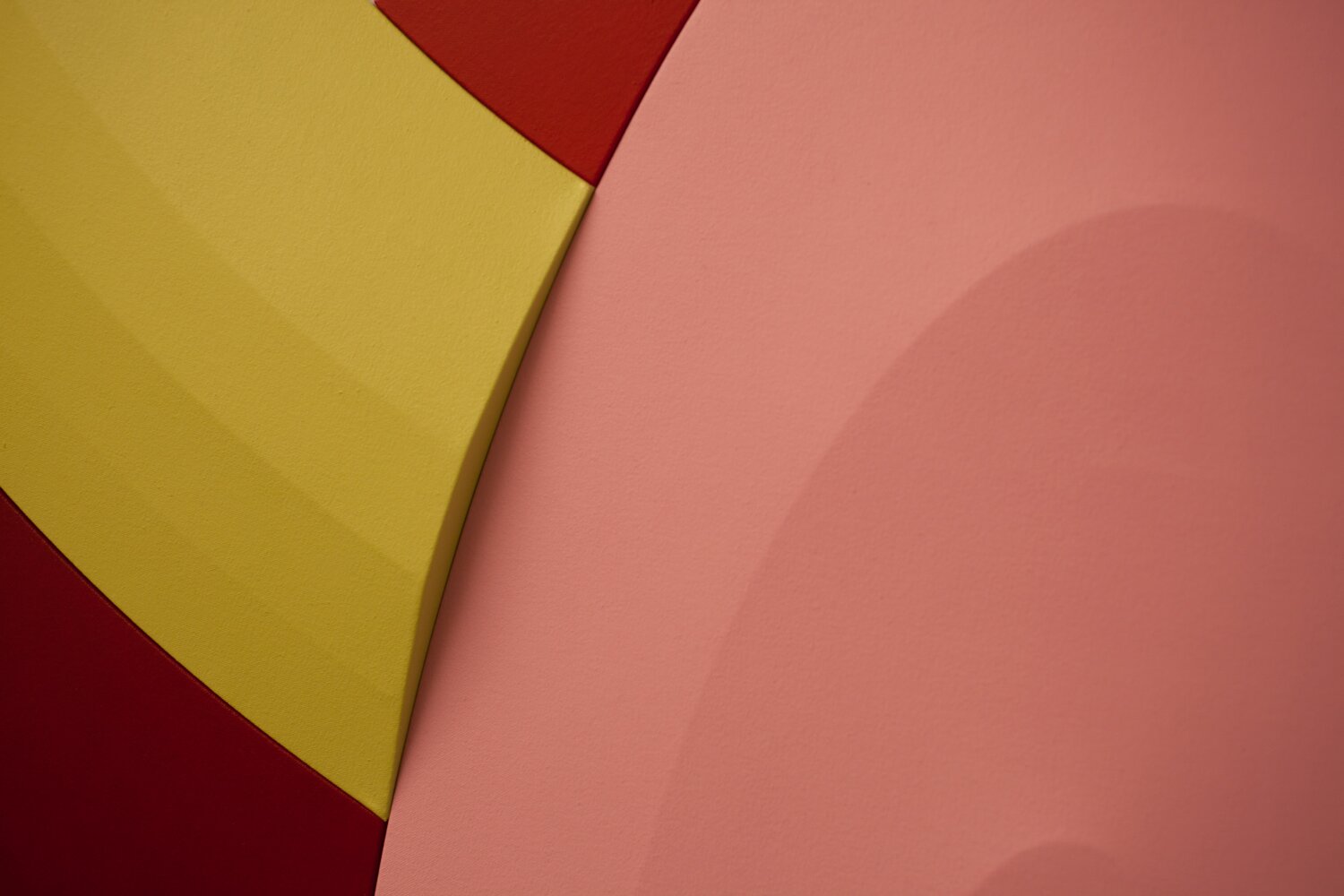
F: What’s your process for the larger interlocking works? How do you take in consideration wrapping of the canvas within the interlocking structures?
J: I design the shapes with the slightest bit of play between them. When the canvas is stretched it fills these small spaces between shapes and the pieces interlock perfectly.
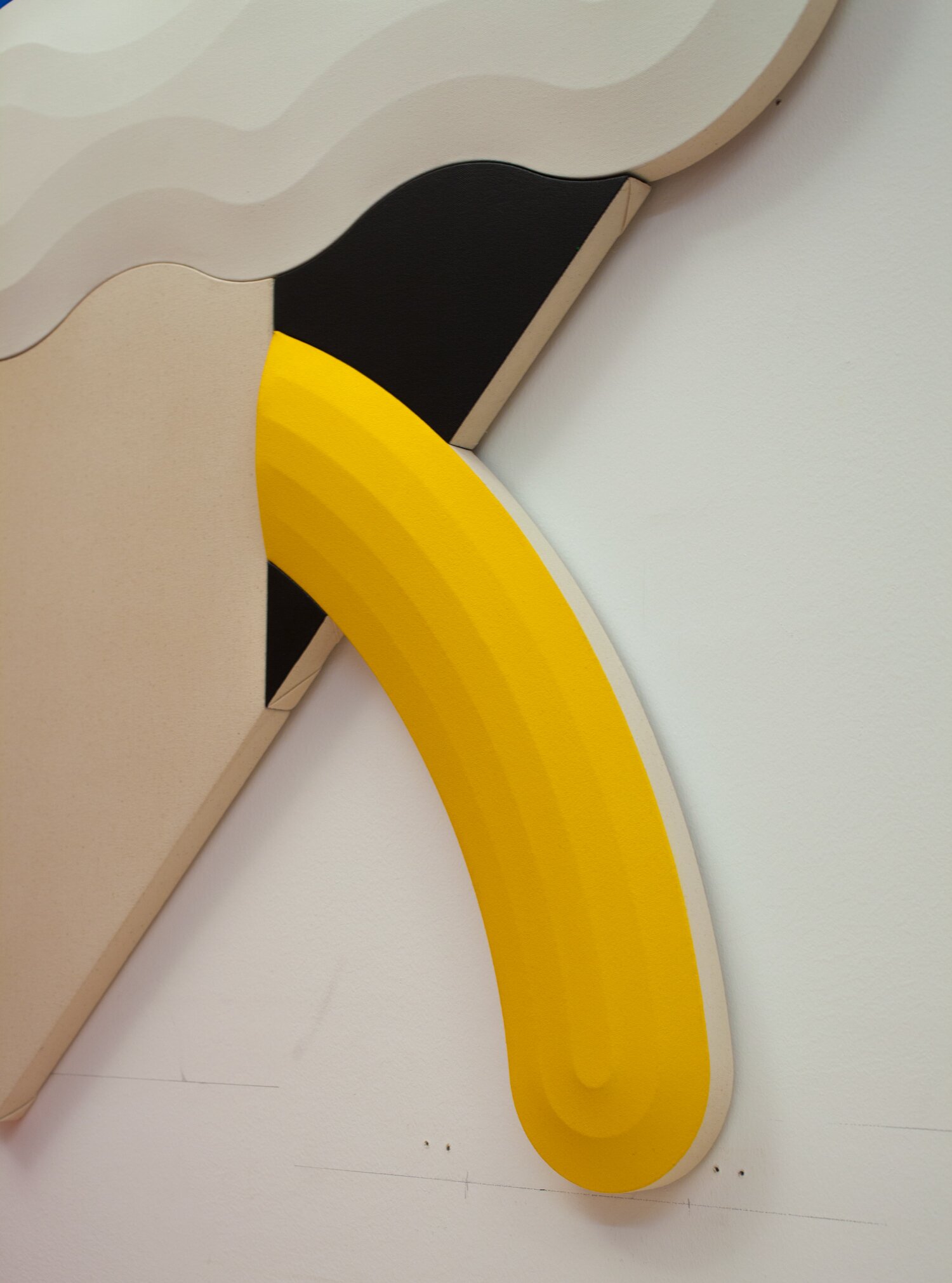
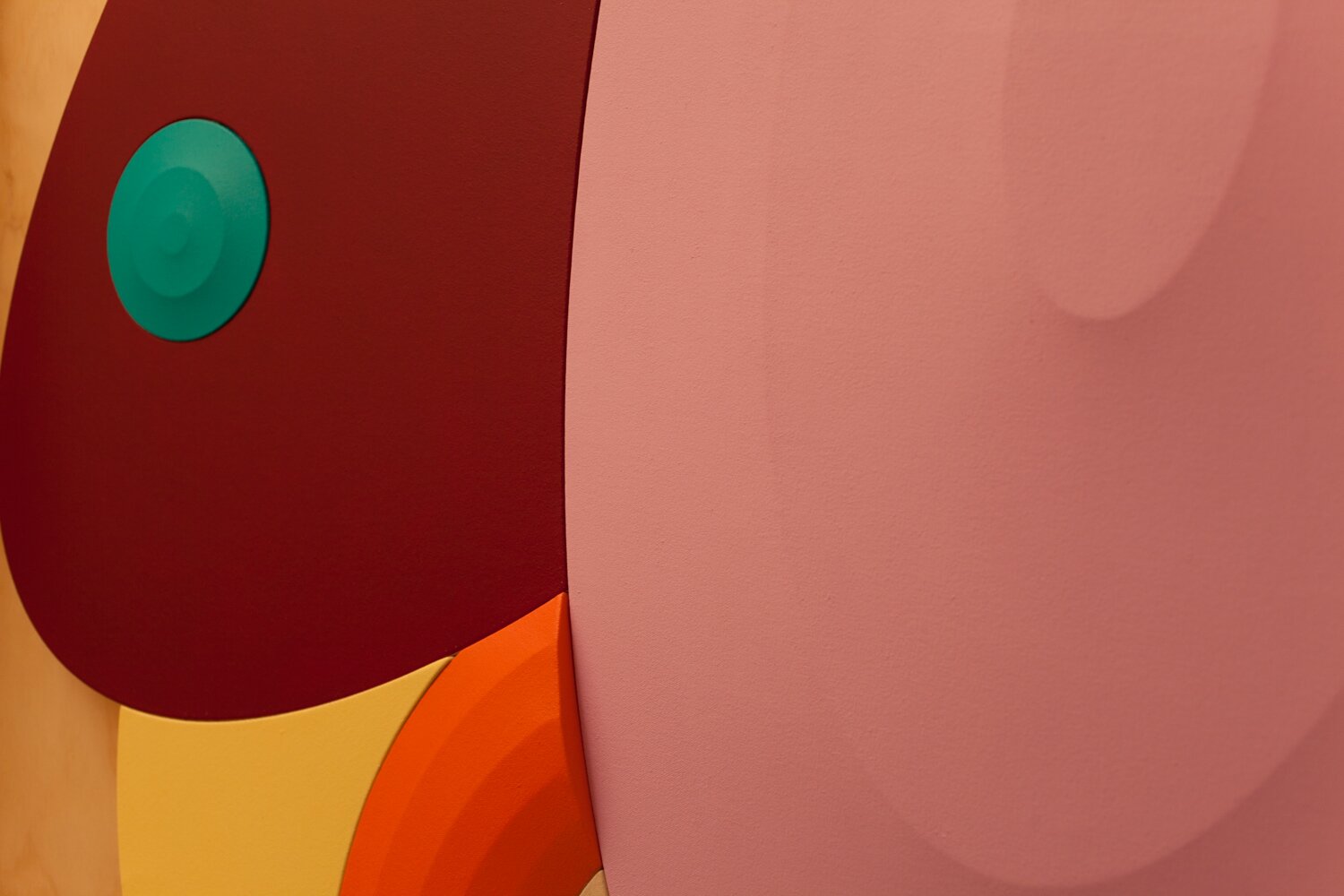
F: Do you see the shapes that are created by the stretching of the canvas as linear moves almost akin to drawing?
J: Yeah. Certain shapes, especially the squiggles, definitely give that feeling. The movement they create is a direct reference to drawing.
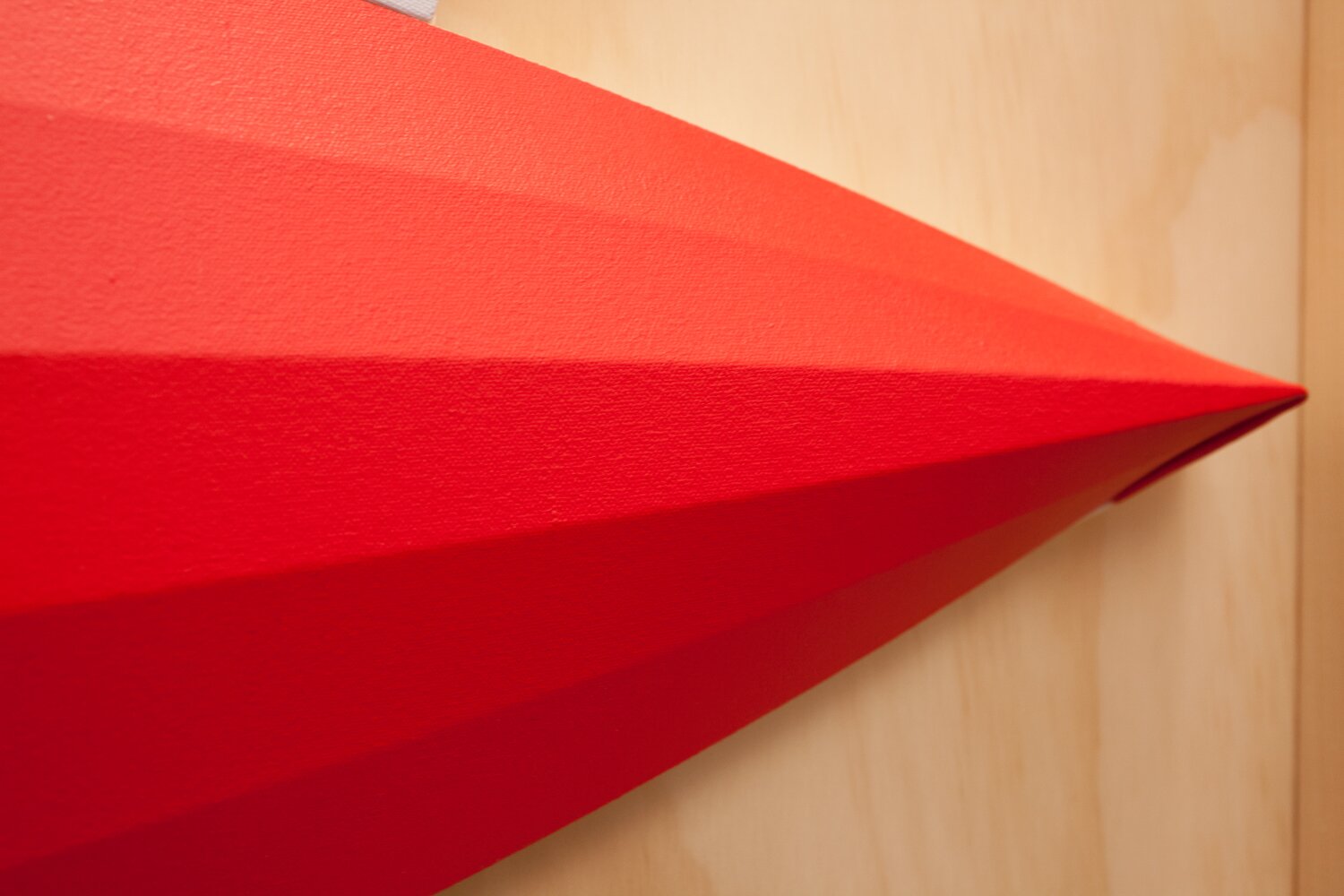
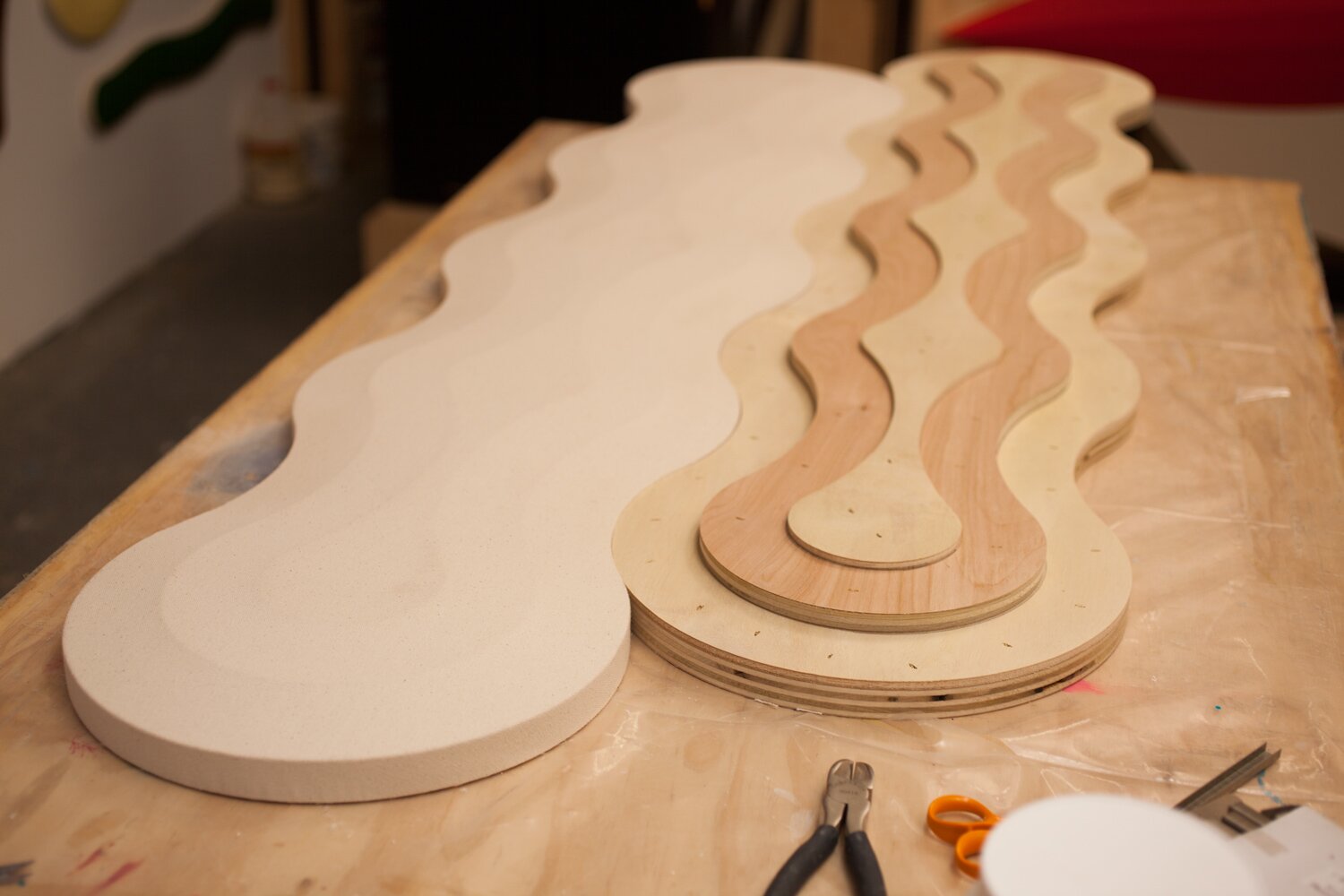
F: There is a certain amount of satisfaction that I get by seeing the structures pre-wrapped, Obviously, I have the chance to see them this way in your studio but have you ever thought about presenting them without the stretched canvas? Or would this change the conversation you want to have about painting?
J: At this point in time I do not want to reveal the structures underneath. I feel that I have yet to fully explore or simply get bored with the canvas wrapped structures. I have thought about exposing them at a certain point down the line but not yet.
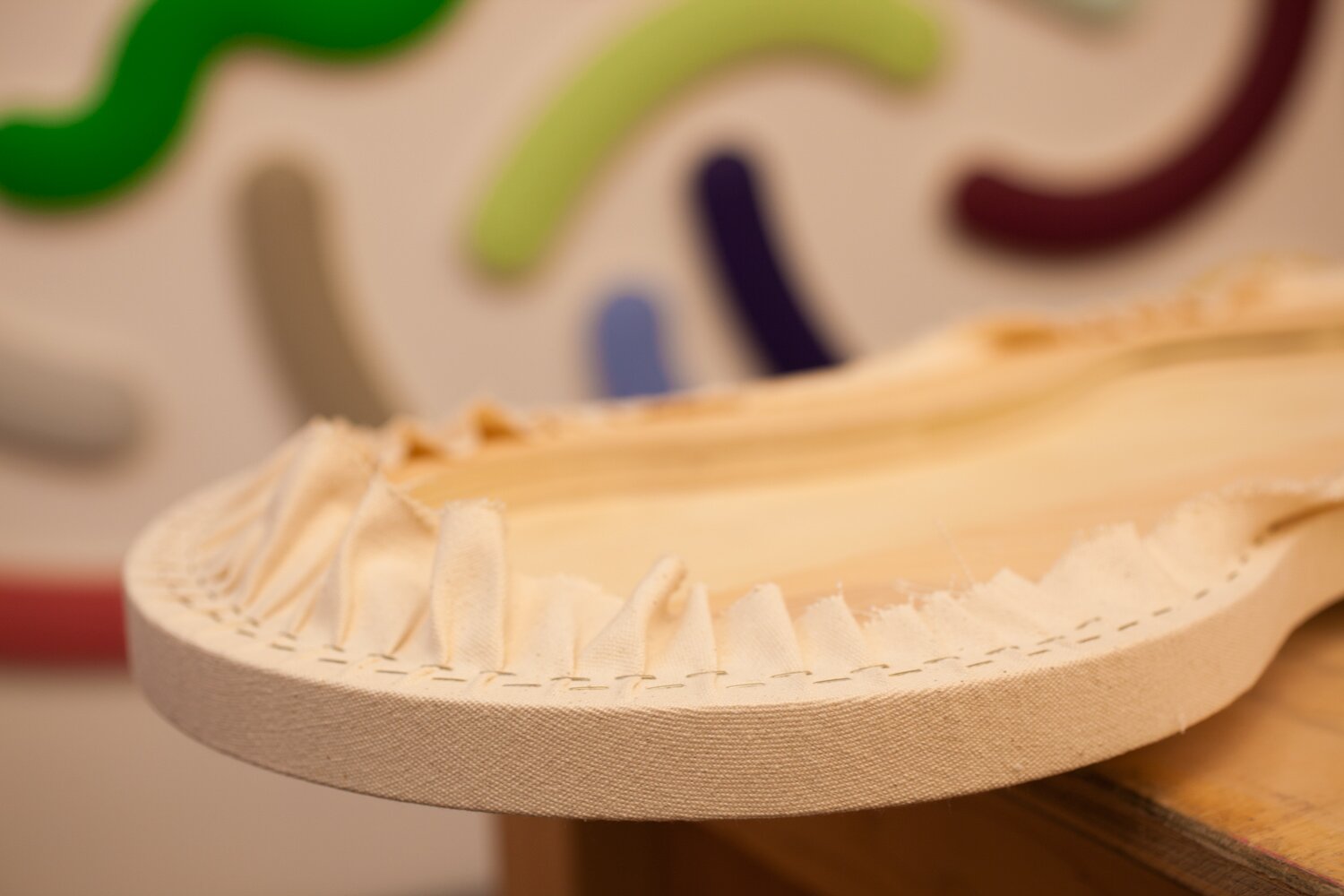

F: Do you determine the colors in the digital stage or do you construct the objects first and then determine the colors?
J: I determine the colors digitally but inevitably about a quarter of the colors change once I begin to see how the colored shapes interact in real life.

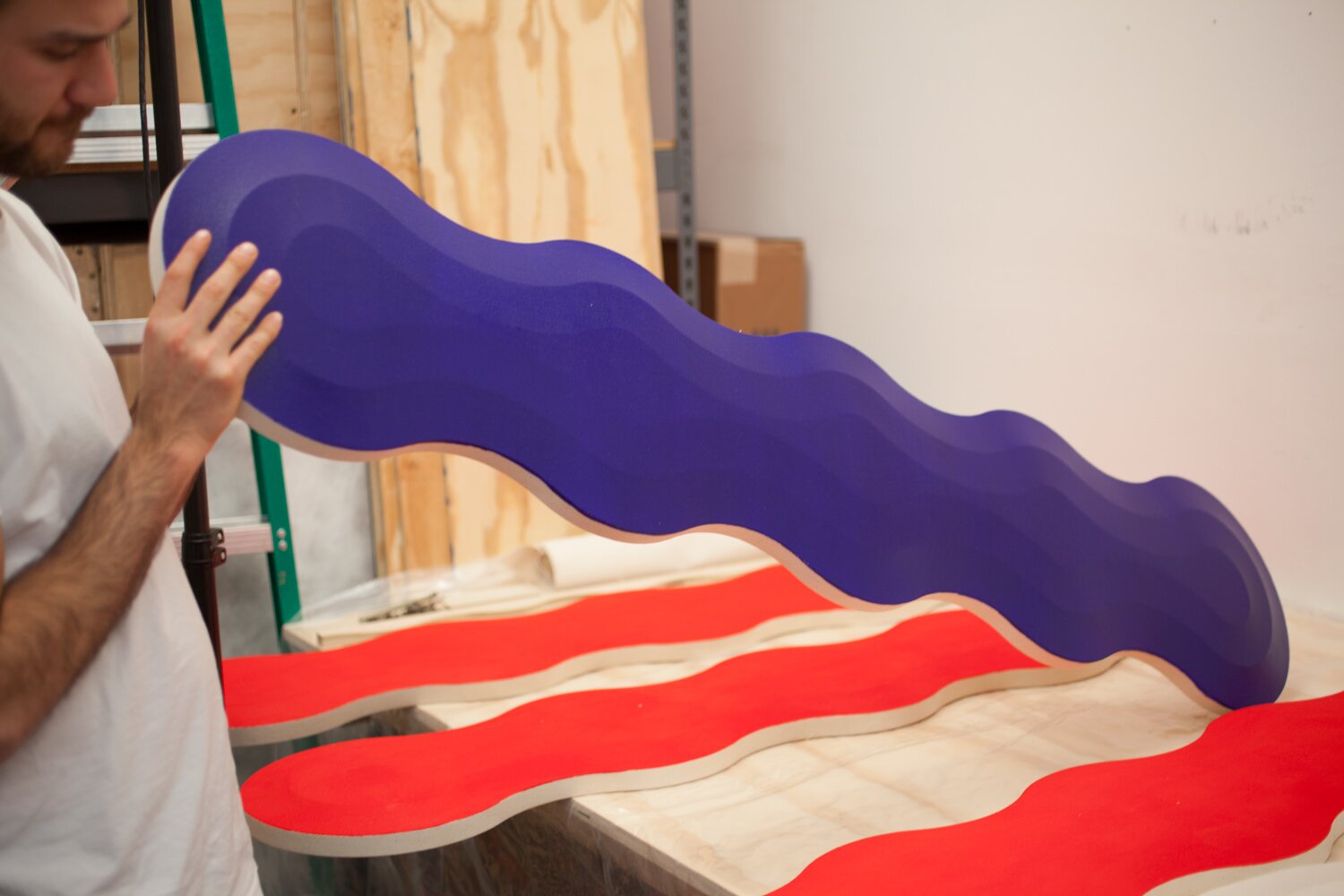
F: The local color of the object and the shadows are determined by the lighting situation. Some colors seem flatter; the neon colors seem to flatten out the whole shape while other colors give more depth. How do you determine the color and depth you want in each painting?
J: I choose the colors based on their interaction without taking into consideration their individual ability of showing light and shadow. I am beginning to understand individual colors ability to reflect and absorb light but have not fully reached a complete understanding. In general lighter colors have more contrast with their shadows and darker shadows have more contrast with their highlights. This aspect of the work is extremely interesting to me and I strive to create the most dynamic shades within each color.

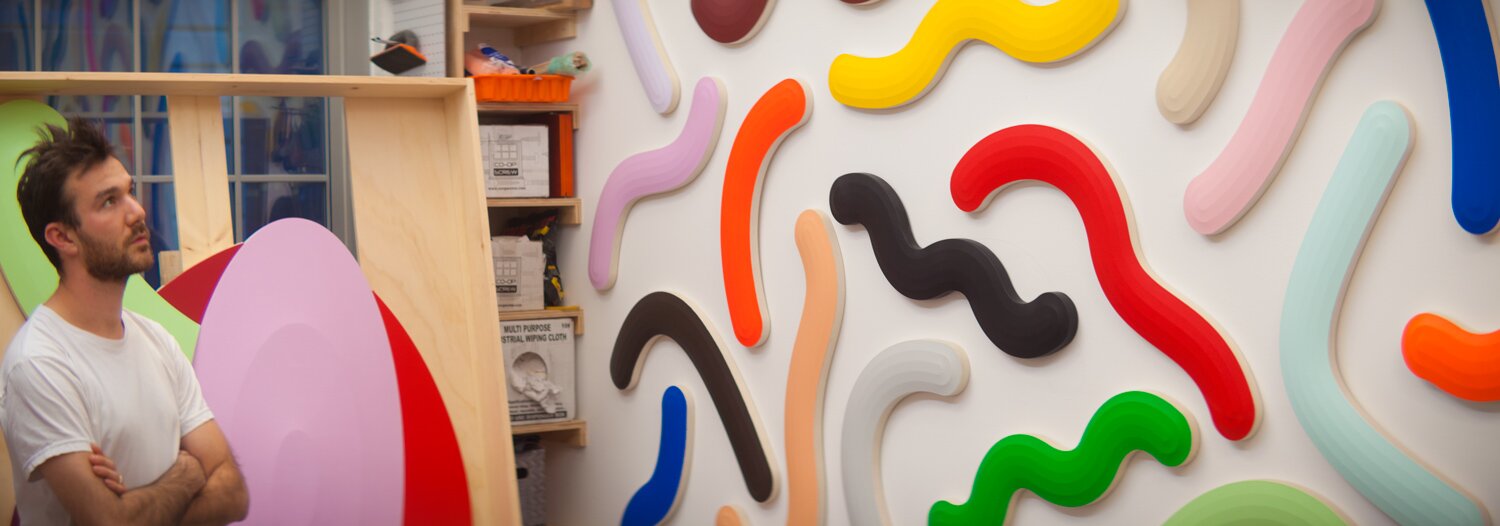
F: With the wall piece are they each individual shapes or are they recurring? Is it considered one piece or multiples (like prints)?
J: The squiggle wall piece is considered one piece. Each piece was designed individually but arranged on the wall specifically to interact within the whole. After this the colors were chosen also taking into consideration the whole piece. It is a giant painting made up of individual marks that just happen to be paintings.

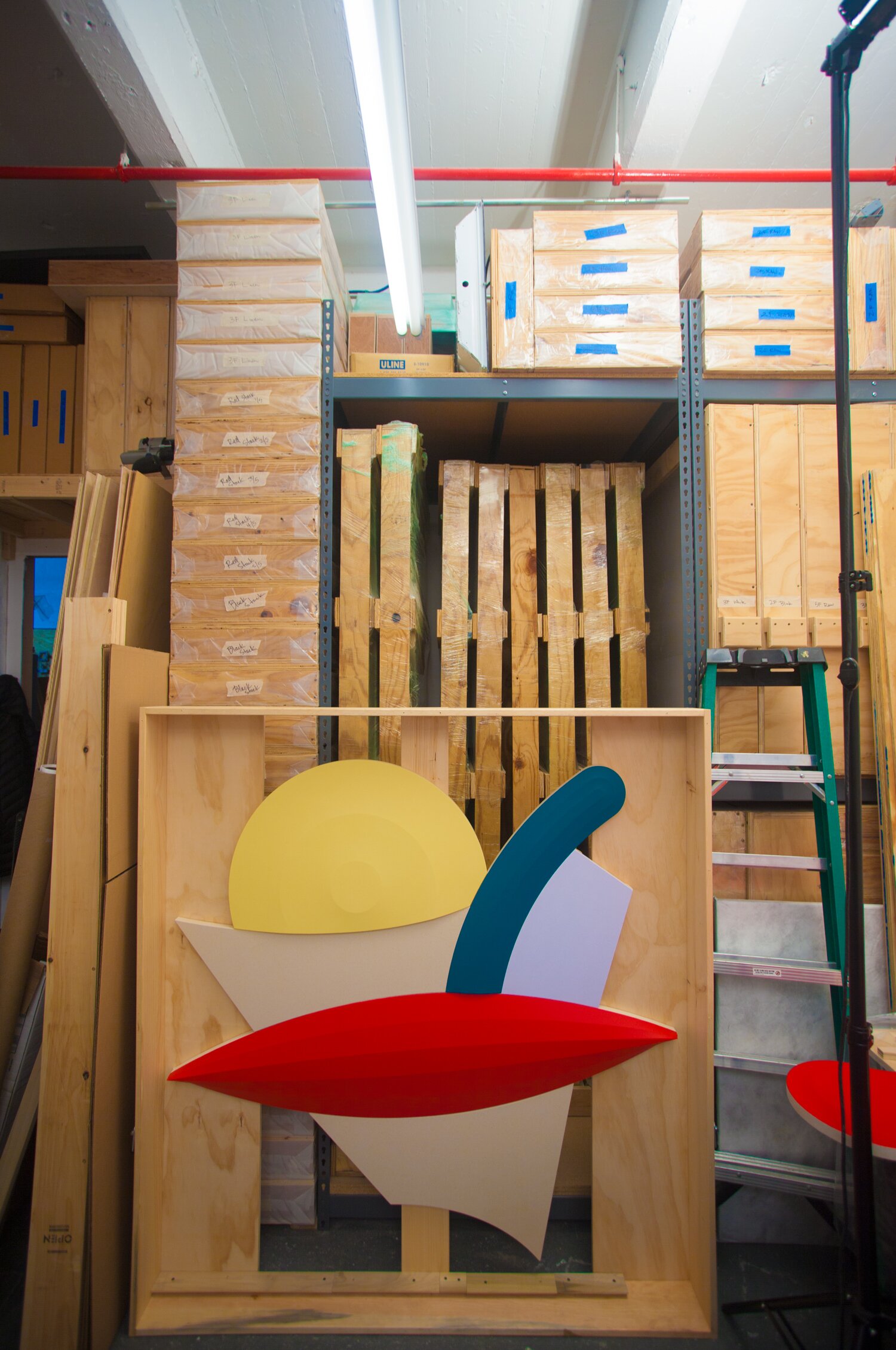
F: Can you talk a little bit about your studio? How long have you been here and what do you look for in a studio?
J: My studio is in Sunset Park, Brooklyn in a complex of large buildings called Industry City. I have been in my studio for a year but I have had other studios in Industry City before this one. I share a large wood shop with a group of cabinet makers. Within that wood shop I have a private space. These 2 spaces are what I look for in a studio. A dirty wood shop space where I can build my structures and a separate, clean space where I can stretch, paint, and store my work.
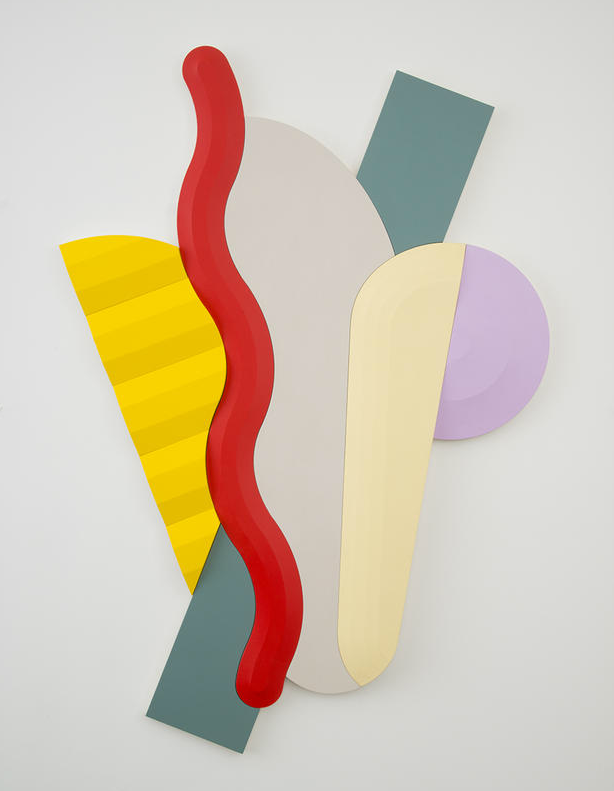
F: You work alongside furniture and cabinet makers, do you feel that that has influenced your work?
J: In a technical way. I observe the materials, tools and joinery techniques they use and occasionally adapt one of their building methods.
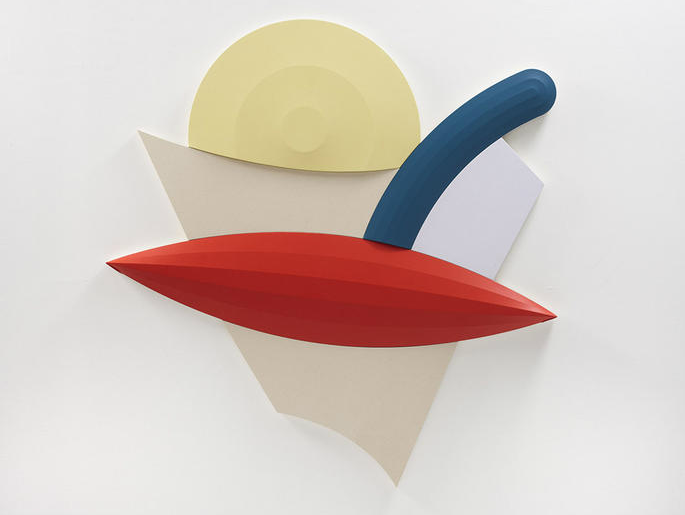
F: What is a typical day in studio like?
J: Typical is sipping on small black dunkin donuts ice coffee and listening to outlaw country music
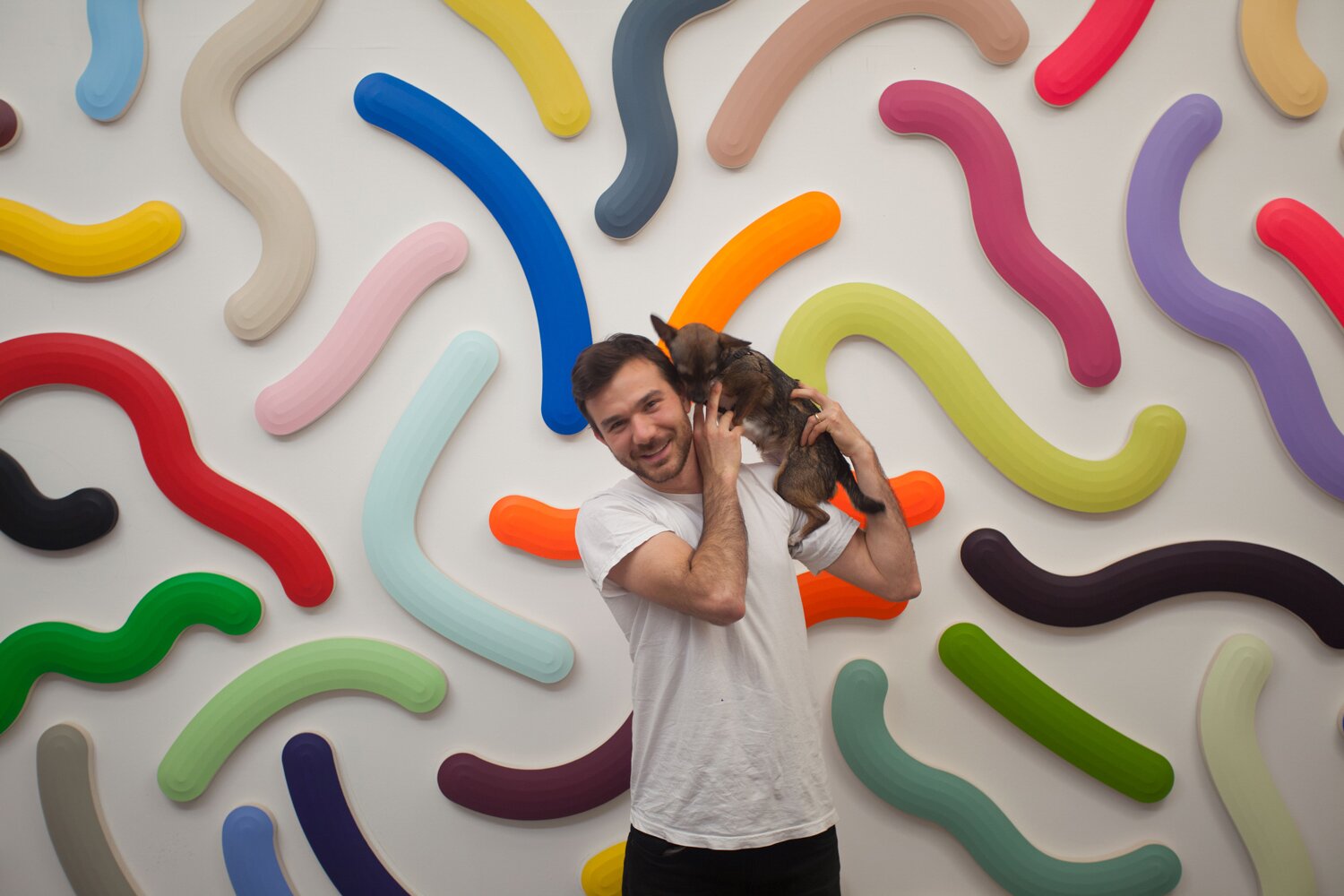
F: Your work is very concise and methodical. What’s the most satisfying part in your process?
J: The most satisfying part is finishing a painting and seeing it for the first time. My paintings are made from multiple parts that do not get assembled until the very end of the process. I see the separate parts progress but I never see them assembled on a wall until the last step. After all the hard work suddenly having your idea come to life is the best.




